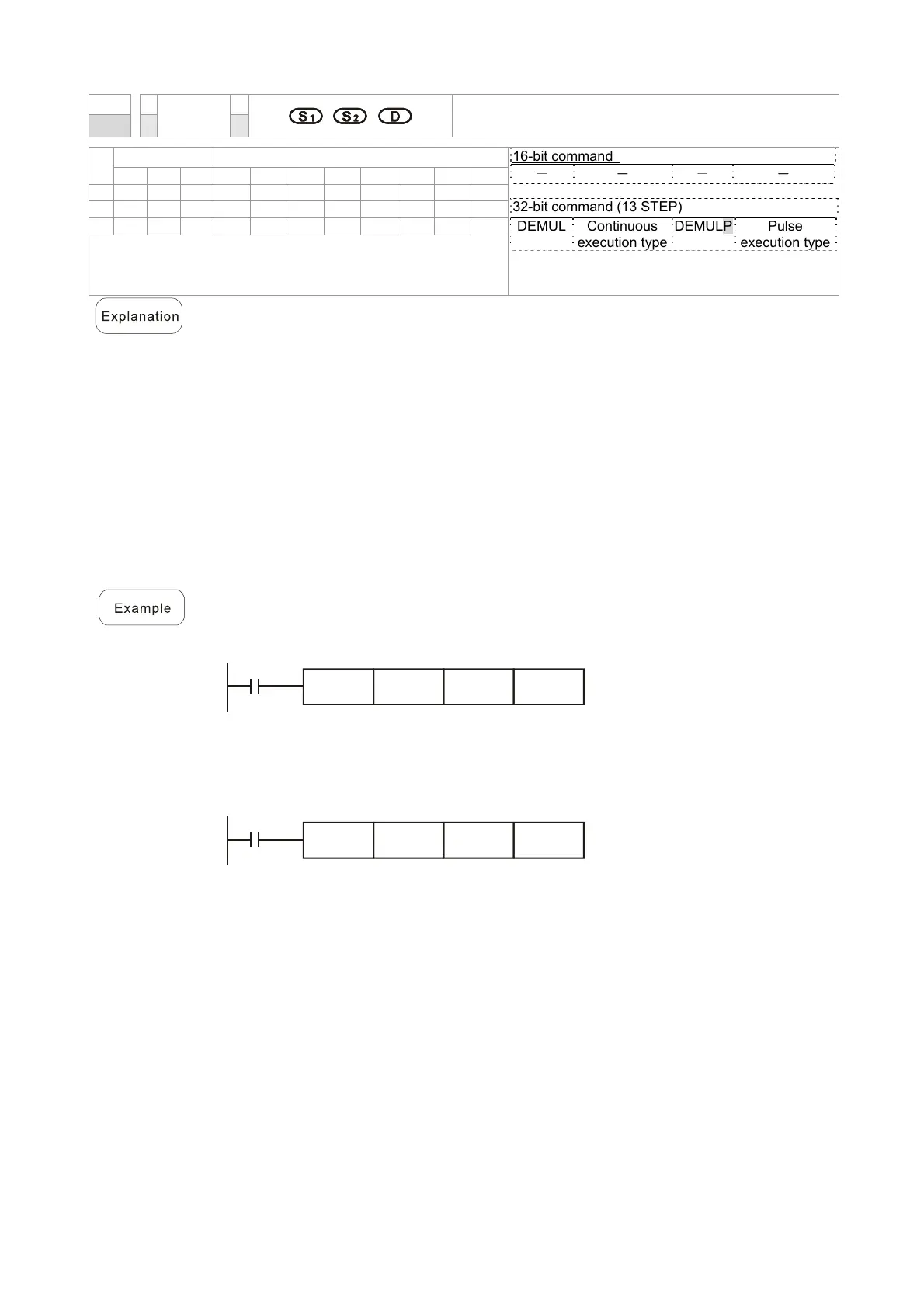Chapter 16 PLC Function ApplicationsC2000-HS
16-84
API
EMUL
Multiplication of binary floating point numbers
122
D P
Bit device Word device
16-bit command
- - - -
32-bit command (13 STEP)
DEMUL Continuous
execution type
DEMULP Pulse
execution type
Flag signal: none
X Y M K H KnX KnY KnM T C D
S1 * * *
S2 * * *
D *
Notes on operand usage:
Please refer to the function specifications table for each device in
series for the scope of device usage
S
1
: multiplicand. S
2
: multiplier. D: product.
When the content of the register designated by S
1
is multiplied by the content of
the register designated by S
2
, the product will be stored in the register
designated by D; multiplication is performed entirely using binary floating-point
numbers.
If the source operand S
1
or S
2
designates a constant K or H, the command will
transform that constant into a binary floating point number for use in
multiplication.
In the situation when S
1
and S
2
designate identical register numbers, if a
"continuous execution" command is employed, when conditional contact is On,
the register will perform multiplication once during each scan. Pulse execution
type commands (DEMULP) are generally used under ordinary circumstances.
When X1=On, the binary floating point number (D1, D0) will be multiplied by the
binary floating point number (D11, D10), and the product will be stored in the
register designated by (D21, D20).
X1
DEMUL D0 D10 D20
When X2 =On, the binary floating point number (D1, D0) will be multiplied from
K1234 (which has been automatically converted to a binary floating-point
number), and the results stored in (D11, D10).
X2
DEMUL D0K1234 D10

